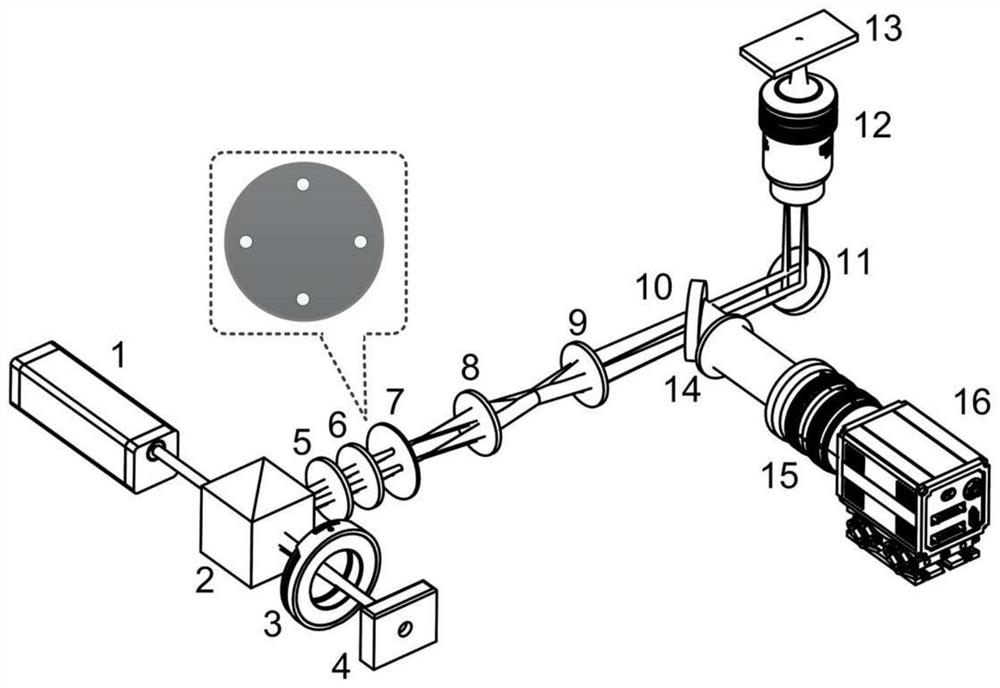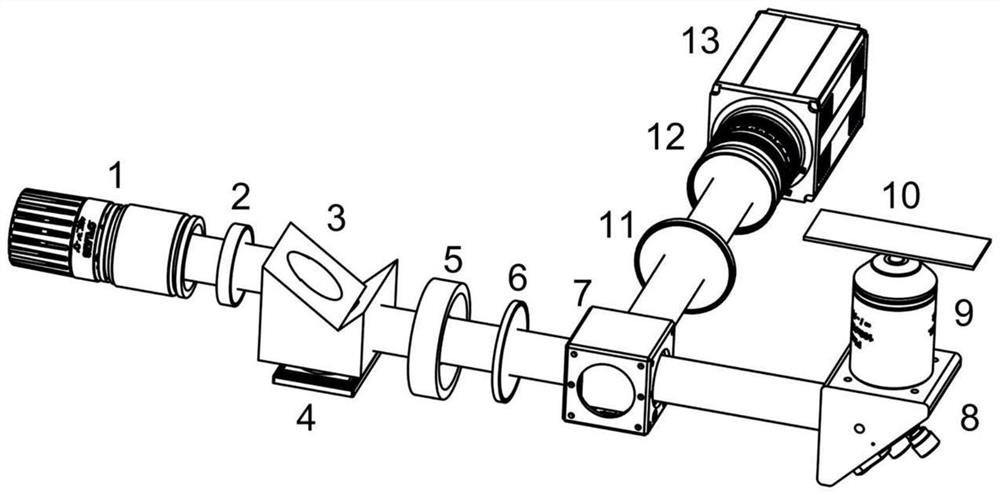Super-resolution imaging method and system using square lattice structured light illumination
A technology of structured light illumination and super-resolution imaging, applied in the field of super-resolution imaging, can solve the problems of reducing system construction cost and construction difficulty, high construction cost, and high phototoxicity, reducing phototoxicity, reducing construction cost, and simplifying polarization control. Effect
- Summary
- Abstract
- Description
- Claims
- Application Information
AI Technical Summary
Problems solved by technology
Method used
Image
Examples
Embodiment 1
[0068] In this embodiment, the method for obtaining super-resolution images by the interferometric lattice illumination SIM super-resolution microscopy system based on spatial light modulator SLM modulation and laser illumination is specifically implemented by the following steps:
[0069] Step 1. Use figure 1The shown interferometric lattice SIM super-resolution microscopy system based on spatial light modulator SLM modulation and laser illumination, the collimated and expanded 488nm wavelength laser enters the polarization beam splitter 2, passes through the half-wave plate, and illuminates the space vertically The light modulator SLM4 returns to the original path, and generates a vertically linearly polarized diffracted beam in the reflected light path of the polarization beam splitter. The vertically polarized light beam is converted into circularly polarized light by a quarter-wave plate 5 and converged by a lens 6, and the zero-order and other high-order diffraction beam...
Embodiment 2
[0091] This embodiment is a method for obtaining a super-resolution image based on an interferometric lattice SIM super-resolution microscope system based on lattice diffraction grating and laser illumination, which is specifically implemented by the following steps:
[0092] Step 1. Use figure 2 The interferometric lattice SIM super-resolution microscopy system based on lattice diffraction gratings and laser illumination is shown. The collimated and expanded 488nm wavelength laser is incident on the two-dimensional lattice grating 2, and the grating divides the incident laser into four beams, and the vertically polarized beam is converted into circularly polarized light by the quarter-wave plate 3 and converged by the lens 4. The converged multi-order diffracted zero-order and other higher-order diffracted beams are custom-made spatial filters 5 (e.g. figure 2 As shown in the inset), only the ±1st-order diffracted beams can pass through, including four beams. Subsequently...
Embodiment 3
[0113] This embodiment is a projected lattice SIM super-resolution microscope system based on a digital micromirror device and LED lighting. In addition, this embodiment will illustrate the implementation of non-equally spaced phase shifts and the corresponding method for obtaining super-resolution images, which are specifically implemented by the following steps:
[0114] Step 1. Use image 3 In the projected lattice SIM super-resolution microscope system based on digital micromirror device DMD modulation and LED illumination, the light emitted by the LED is focused by the condenser lens 2, and then enters the total internal reflection beam splitter prism 3 and the digital micromirror device 4. The structured light generating module is collimated by the collimator lens 5 and filtered by the excitation light filter 6 , passes through the dichroic mirror 7 , and enters the rear pupil of the microscope objective lens 9 . The collimator lens 5 and the microscopic objective lens ...
PUM
 Login to View More
Login to View More Abstract
Description
Claims
Application Information
 Login to View More
Login to View More - R&D
- Intellectual Property
- Life Sciences
- Materials
- Tech Scout
- Unparalleled Data Quality
- Higher Quality Content
- 60% Fewer Hallucinations
Browse by: Latest US Patents, China's latest patents, Technical Efficacy Thesaurus, Application Domain, Technology Topic, Popular Technical Reports.
© 2025 PatSnap. All rights reserved.Legal|Privacy policy|Modern Slavery Act Transparency Statement|Sitemap|About US| Contact US: help@patsnap.com



